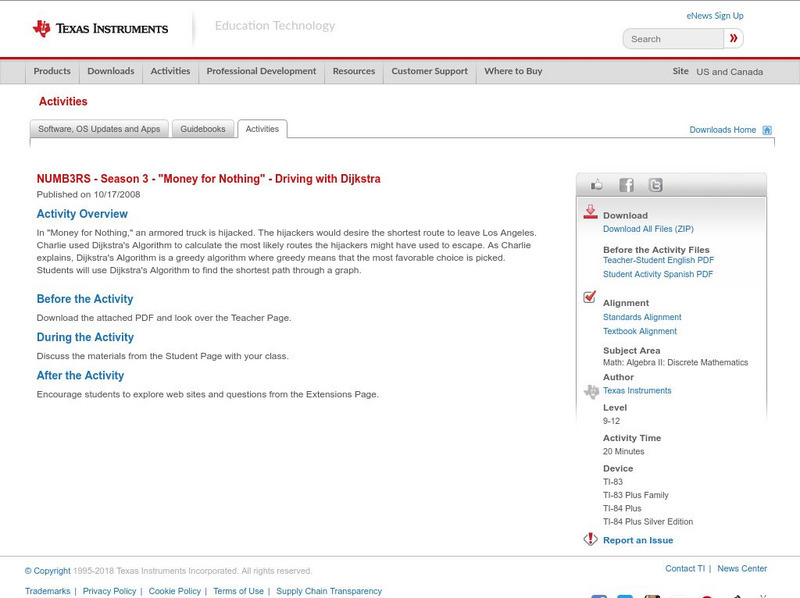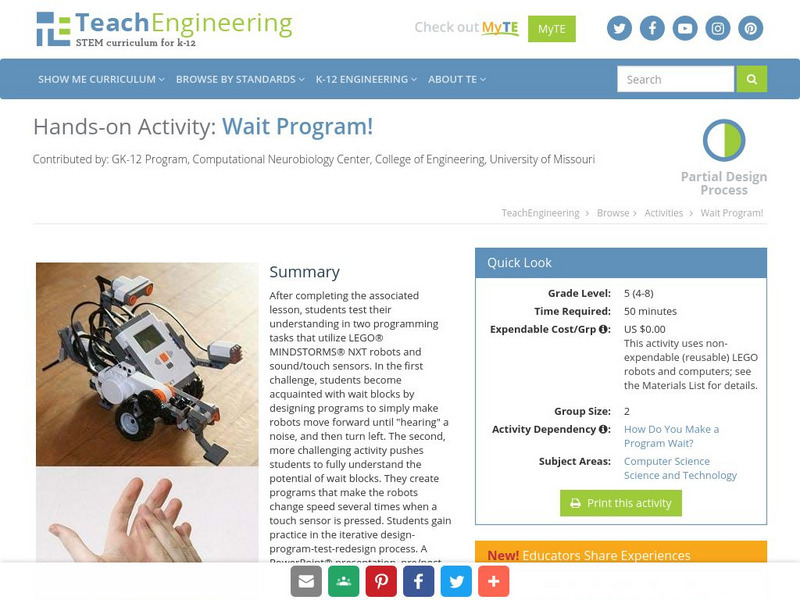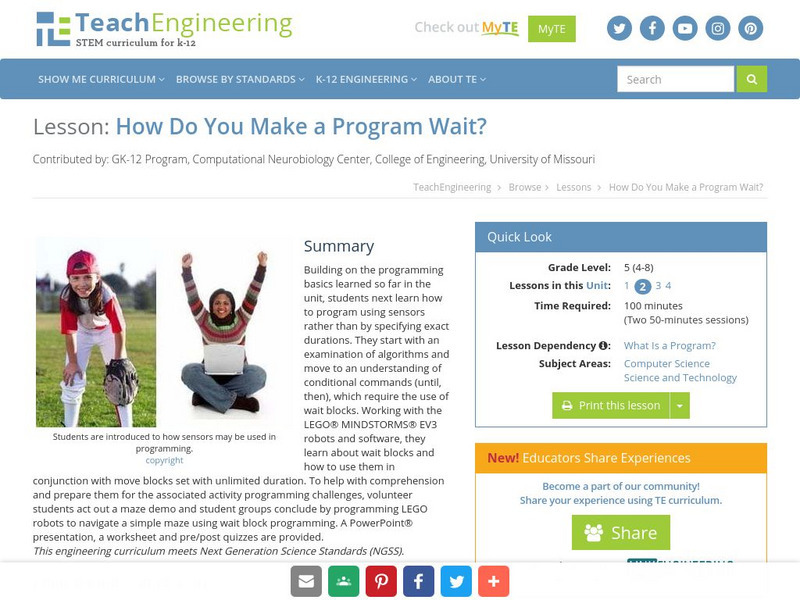Hi, what do you want to do?
Curated OER
How to Make Multiplying Fractions Exciting
Make sure your pupils understand the algorithm by using this hands-on lesson using modeling clay.
Curated OER
Review of Trees
For this math worksheet, students answer 50 multiple choice and true and false questions on trees, functions and algorithms. They interpret binary and mystery trees.
Curated OER
Review of Searching
In this math review worksheet, learners answer 50 multiple choice and true/false questions related to algorithms and has functions.
Curated OER
Brute Force and Other Algorithms
Young scholars discuss why it can be difficult to solve word problems. In this algorithm lesson, students review better methods to outline word problems and solve the problem of the Ice Cream Stands. They discuss how the name Brute Force...
Curated OER
Partial Quotients
Fifth graders examine the partial-quotients algorithm for finding the answer to a division problem. In this partial quotients lesson, 5th graders demonstrate the process of division through a series of estimations....
Curated OER
Differentiated Math
Fourth graders study a division algorithm. In this math lesson, 4th graders solve division problems using partial quotients. Students solve division problems and check their answers with the class.
Curated OER
The Dart Problem
In this dart problem worksheet, students write an algorithm to determine the greatest impossible score for a dartboard game. This one-page worksheet contains 1 problem. The answer is listed at the end of the problem.
Curated OER
Arithmetrivia
In this arithmetrivia worksheet, students read and solve word problems. They translate from word problems to written equations and then solve them. This one-page worksheet contains 12 problems. Answers are provided.
Curated OER
Multiplying 2-Digit Numbers
In this multiplying 2-digit numbers worksheet, students solve and complete 4 different problems. First, they multiply by the right-bottom digit and then the left-bottom digit. Finally, they add all numbers together and write the answer.
Curated OER
Mathematics of Image Processing Project
In this image processing instructional activity, students complete 4 steps related to image processing. First, they work in teams of 2-3 and create a hard copy report and documented m-files. Then, students try compression at various...
Curated OER
The Babylonian Algorithm, Limits and Rates of Change
For this successive approximations worksheet, students use the Babylonian algorithm to determine the roots of given numbers. They identify the limits of a function, and compute the rate of change in a linear function. This two-page...
Curated OER
Egyptian Multiplication
High schoolers examine the Egyptian method of multiplication and independently multiply any two numbers using the Egyptian algorithm.
Curated OER
Multiplication
Sixth graders play the game "MultipliACTION," where they use a standard algorithm to multiply numbers. They use the website Mathfrog and select "MultipliACTION." Students fill in the answer boxes, from right to left, top to bottom, or...
Texas Instruments
Texas Instruments: Numb3 Rs: Driving With Djikstra
Based off of the hit television show NUMB3RS, this lesson introduces students to one of the prominent algorithms in graph theory used to find shortest paths -- the Djikstra Algorithm. The lesson includes four graphs of increasing...
Science Buddies
Science Buddies: Getting More Out of Less : Google Hits and Search Terms
Google is the name of the most often used search engine on the Internet. "Googol" is the mathematical term for a 1 followed by 100 zeros. It's a very large number. This experiment will help you test different search terms and find out.
Kent State University
Rashid Bin Muhammad: Design and Analysis of Algorithms
This site contains the lecture notes from Dr. Muhammad's course on algorithm design and analysis.
Other
Ohio Department of Education: Models for Dividing Fractions [Pdf]
This resource consists of a detailed, hands-on lesson plan for dividing fractions using manipulatives such as fraction bars.
Other
The Stony Brook Algorithm Repository
A comprehensive collection of algorithm implementations for fundamental problems in combinatorial algorithms. Provides algorithms for common programming problems. It also provides pointers on how to implement those algorithms in various...
TeachEngineering
Teach Engineering: Wait Program!
After completing an associated lesson, students test their understanding in two programming tasks that utilize LEGO MINDSTORMS NXT robots and sound/touch sensors. Students gain practice in the iterative design-program-test-redesign process.
TeachEngineering
Teach Engineering: What Is a Program?
Using a few blindfolds and a simple taped floor maze exercise, learners come to understand that computers rely completely upon instructions given in programs and thus programs must be comprehensive and thorough. Then students learn to...
TeachEngineering
Teach Engineering: How Do You Make a Program Wait?
Building on the programming basics learned so far in a corresponding Robotics unit, learners learn how to program using sensors rather than by specifying exact durations. Working with the LEGO MINDSTORMS NXT robots and software, they...
TeachEngineering
Teach Engineering: Does It Work? Test and Test Again
Testing is critical to any design, whether it be in the creation of new software or building a bridge across a wide river. Despite risking the quality of the design, the testing stage is often hurried in order to get products to market....
TeachEngineering
Teach Engineering: Do You See What I See?
Students research OCR and OCR techniques and then apply those methods to the design challenge by developing algorithms capable of correctly reading a number on a typical high school sports scoreboard.
Cornell University
Cornell University: Kleinberg: The Mathematics of Algorithm Design
This site contains a paper (in PDF format) that describes some ways in which efficiency analysis may be performed on algorithms.





















![Ohio Department of Education: Models for Dividing Fractions [Pdf] Lesson Plan Ohio Department of Education: Models for Dividing Fractions [Pdf] Lesson Plan](https://static.lp.lexp.cloud/images/attachment_defaults/resource/large/FPO-knovation.png)





